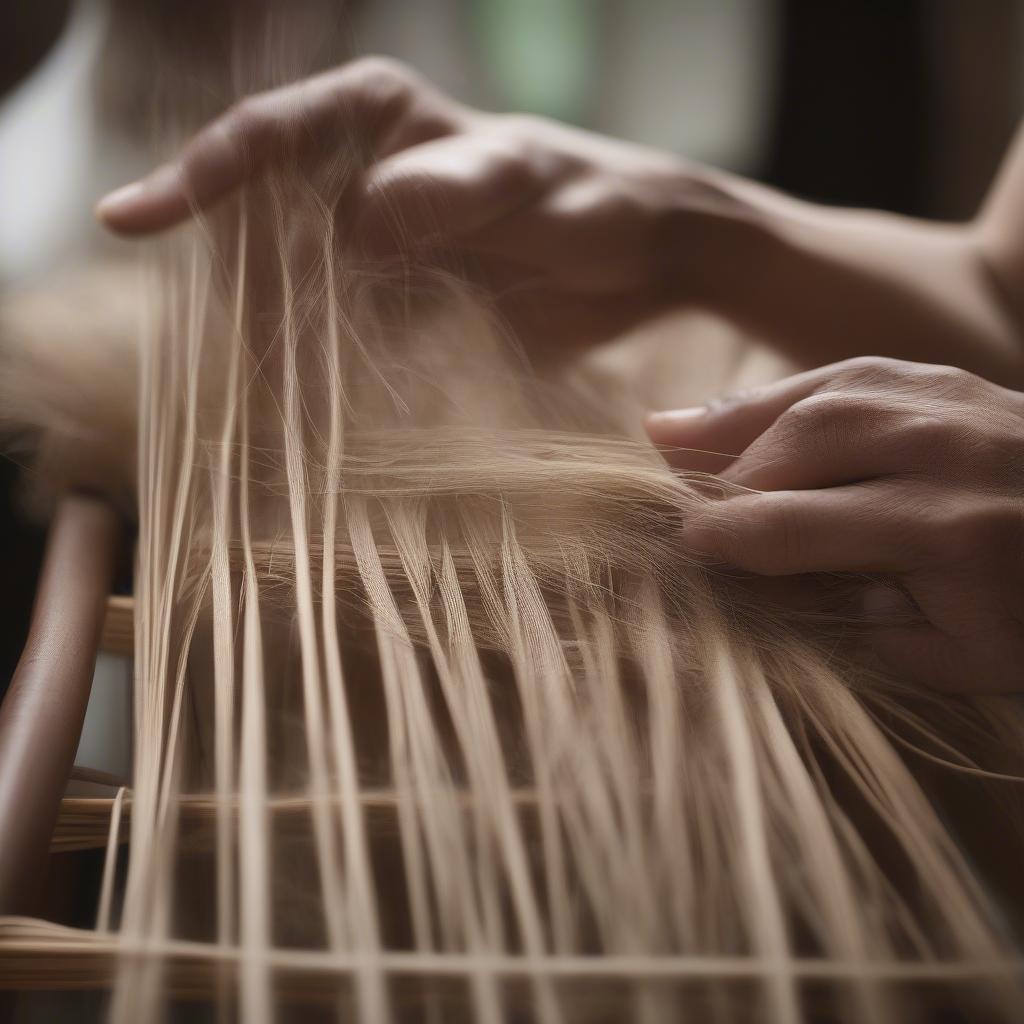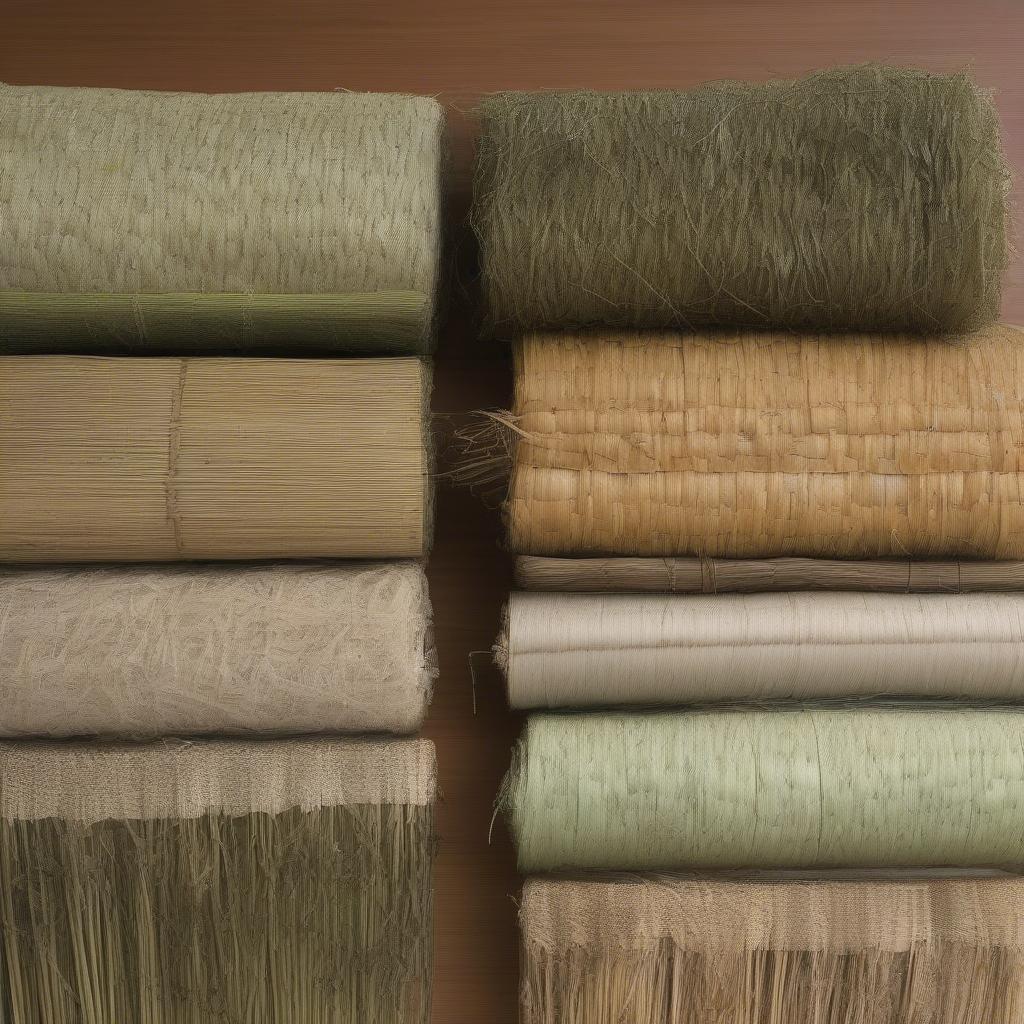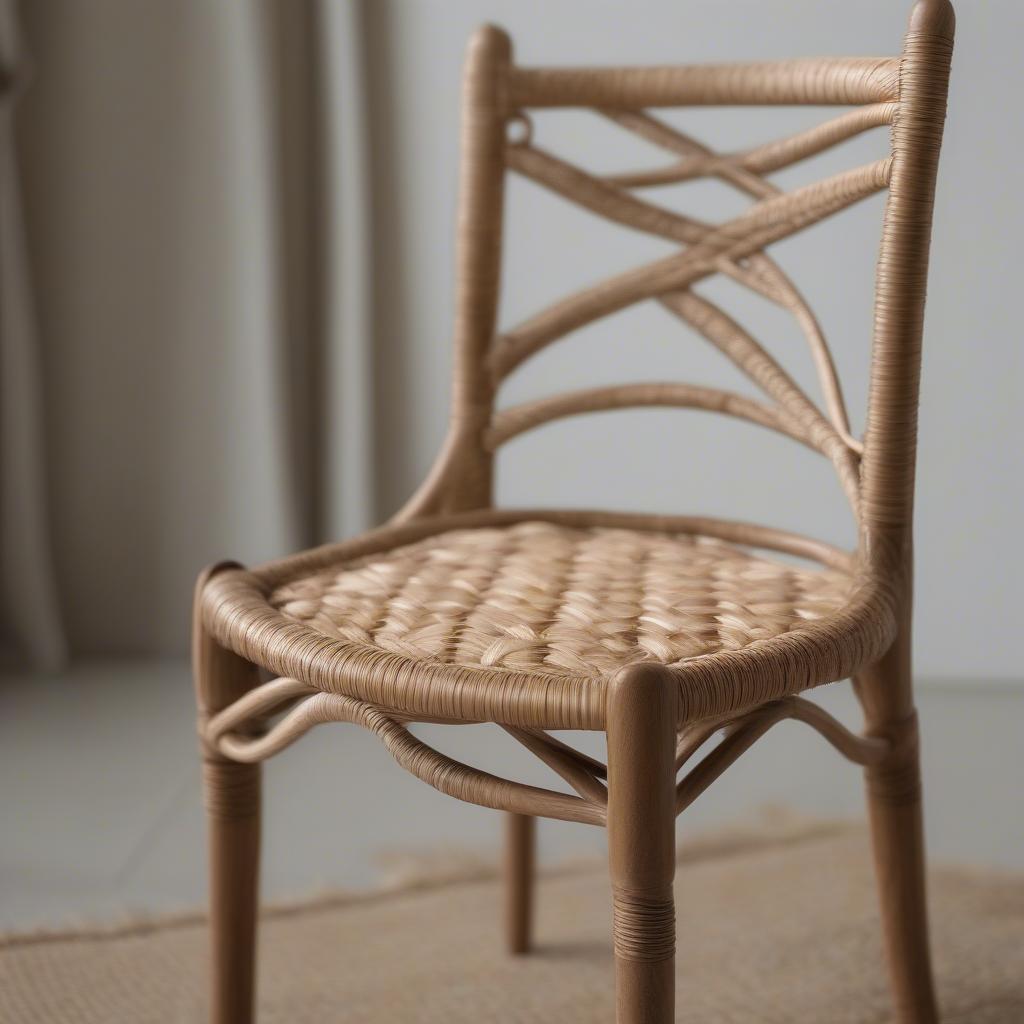Weave Chair
Master the Art of Chair Caning Rush Weaving
Chair Caning Rush Weaving is a traditional craft that involves weaving natural rush fibers to create beautiful and durable chair seats. This technique adds a touch of rustic charm and elegance to any chair, making it a popular choice for both antique restoration and contemporary furniture design. Learn how to master this timeless craft and give new life to your cherished chairs.  Close-up of hands weaving rush onto a chair frame
Close-up of hands weaving rush onto a chair frame
What is Chair Caning Rush Weaving?
Chair caning rush weaving uses twisted or braided lengths of rush, a type of wetland plant, to form a supportive and decorative seat. Unlike traditional cane weaving, which uses thin strips of rattan, rush weaving provides a more substantial and textured surface. The resulting seat is not only strong but also adds a unique tactile dimension to the chair.
This craft has a rich history, dating back centuries. Originally a practical solution for seating, it quickly evolved into an art form, with weavers developing intricate patterns and techniques. Today, chair caning rush weaving continues to be appreciated for its beauty, durability, and connection to traditional craftsmanship.
One of the appealing aspects of chair caning rush weaving is its versatility. It can be applied to a wide range of chair styles, from simple ladder-back chairs to more elaborate armchairs. Whether you’re restoring an antique heirloom or adding a touch of rustic charm to a modern piece, rush weaving can enhance the overall aesthetic of any chair. how to treat chair basket weave
Different Types of Rush for Chair Weaving
Several types of rush are suitable for chair weaving, each with unique properties. Common varieties include:
- Seagrass: A durable and readily available option, known for its natural variations in color and texture.
- Paper Rush: A softer and more pliable material made from twisted paper fibers. Ideal for beginners.
- Cattail Leaf: A natural rush with a distinctive flat, broad leaf that creates a unique woven pattern.
- Hand-twisted Rush: A traditional option known for its strength and texture. Offers a more rustic look.
Choosing the right type of rush depends on the chair’s style, desired aesthetic, and the weaver’s skill level.  Various types of rush suitable for weaving chair seats
Various types of rush suitable for weaving chair seats
Getting Started with Chair Caning Rush Weaving
Before you begin, gather the necessary materials: rush, a chair frame with holes for weaving, a soaking bucket, scissors, and a measuring tape. Soaking the rush is crucial for making it pliable and preventing breakage during weaving.
What tools are needed for chair caning rush weaving? The basic tools required are a soaking bucket, sharp scissors, a measuring tape, and potentially an awl for adjusting holes in the chair frame.
The first step involves measuring and cutting the rush to the appropriate lengths. It’s essential to allow for extra length to account for the weaving process. Beginners may find it helpful to practice basic weaving techniques on a small frame or sample piece before tackling a full chair seat.
What is the first step in chair caning rush weaving? The very first step is to soak your chosen rush material in water to make it pliable for weaving. shaker chair weaving
Weaving Techniques and Patterns
Various weaving patterns can be achieved with rush, from simple over-under weaves to more complex designs. The “7-step weave” is a popular pattern known for its strength and visual appeal. It involves a specific sequence of over-under passes through the chair frame holes.
What is the 7-step weave in chair caning? The 7-step weave is a common rush weaving technique that creates a strong and visually appealing pattern by passing the rush through the chair frame holes in a seven-step sequence. shaker chair tape weaving
Mastering these patterns requires practice and patience. Beginners can start with simpler patterns and gradually progress to more intricate designs as they gain confidence. Resources like online tutorials and workshops can provide valuable guidance.
“The beauty of rush weaving lies in its ability to transform a simple chair into a work of art. The rhythmic process of weaving and the natural texture of the rush create a sense of connection to both the material and the tradition,” says renowned furniture restorer, Amelia Blackwood.
Caring for Your Rush Woven Chair
Proper care ensures the longevity of your rush woven chair. Avoid excessive moisture and direct sunlight, which can cause the rush to dry out and become brittle. Regular dusting and occasional cleaning with a damp cloth are recommended.
“Regular maintenance, such as dusting and avoiding prolonged exposure to moisture, will help preserve the beauty and integrity of your rush woven seat for years to come,” advises furniture conservator, Charles Finch.  A completed chair seat woven with rush
A completed chair seat woven with rush
Conclusion
Chair caning rush weaving is a rewarding craft that allows you to create beautiful and functional pieces of furniture. By understanding the different types of rush, weaving techniques, and proper care methods, you can master this art and enjoy the timeless beauty of rush woven chairs. Start your chair caning journey today and bring a touch of rustic charm to your home. brennan's chair caning & seat weaving service
FAQs
- How long does a rush seat last? With proper care, a rush seat can last for decades.
- Is rush weaving difficult to learn? While it requires practice, rush weaving is a manageable craft for beginners.
- What is the difference between cane and rush? Cane is made from thin strips of rattan, while rush is a thicker, more textured material.
- Can I repair a damaged rush seat? Minor repairs are possible, but significant damage may require re-weaving.
- Where can I buy rush for chair caning? Rush can be purchased online, at craft stores, and from specialized suppliers.
- What is the best type of rush for beginners? Paper rush is often recommended for beginners due to its pliability.
- Are there different patterns for rush weaving? Yes, various weaving patterns exist, from simple to complex designs. chair weaver crossword
Need help with your chair caning project? Contact our Hotline: +84 388 951 999, or visit us at Hanoi, Vietnam or Tech Avenue, Suite 12, San Francisco, CA 94105, USA. We offer 24/7 customer support.
